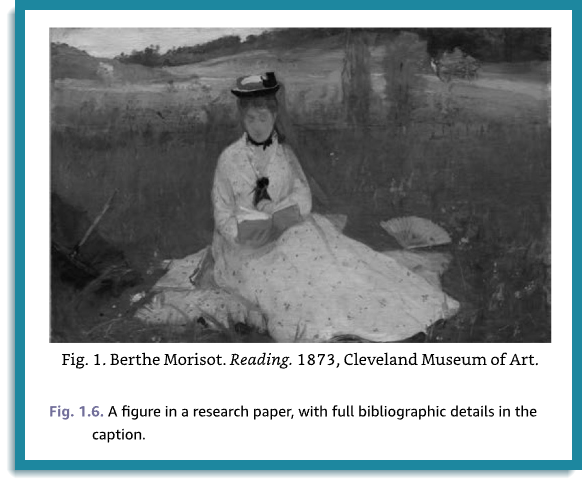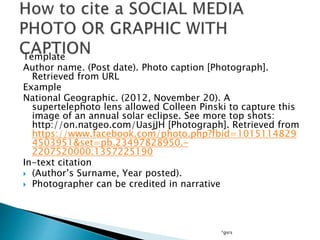Adding eye-catching photos to your articles can really make your content stand out, and Shutterstock is a popular source for high-quality images. But, it’s super important to know how to properly give credit and stay within legal boundaries. Properly citing Shutterstock images not only keeps you out of trouble but also respects the work of talented photographers. In this guide, we’ll walk through the essentials of citing
Understanding Shutterstock Licensing and Usage Rights

Before you even think about citing a Shutterstock photo, it’s crucial to understand the licensing options and what rights you have with each one. Shutterstock offers primarily two types of licenses: Standard and Enterprise (or Enhanced). Each comes with different permissions and restrictions.
Standard License
The Standard License is suitable for most common uses such as blog posts, websites, social media, and presentations. With this license, you can:
- Use the image in online content for up to 500,000 views
- Include the image in digital advertisements (with some restrictions)
- Print up to 2,500 copies for promotional purposes
However, there are limitations:
- You cannot use the image in merchandise for resale (like T-shirts or mugs)
- The image cannot be used in sensitive contexts (such as controversial topics) without additional rights
- Reproduction beyond the license’s scope requires an extended license
Extended License
The Extended License grants broader rights, suitable for items like merchandise or mass distribution. It allows:
- Unlimited reproductions and distributions
- Use in products for resale (e.g., apparel, stationery)
- More flexibility for advertising and commercial projects
Note that Extended Licenses come at a higher cost, but they provide the freedom to use images in ways not permitted under the Standard License.
Understanding Usage Rights
Once you’ve chosen the right license, it’s important to understand what rights you have and what you don’t. Shutterstock’s licenses generally allow you to:
- Use images in digital and print media
- Modify or crop images to fit your design
- Embed images in online articles, blogs, and social posts
But they typically do not permit you to:
- Resell or redistribute the original image standalone
- Use images in a way that could be defamatory or damaging
- Use images in a way that suggests endorsement by the photographer or Shutterstock
Always check the specific license agreement attached to each image before usage to avoid any legal pitfalls. Proper citation and understanding of licensing can seem complex at first, but taking the time to understand these rights ensures you’re respecting creators and staying within legal boundaries. If in doubt, consulting Shutterstock’s licensing FAQs or reaching out to their support can be very helpful.
Steps to Properly Cite a Shutterstock Photo in Your Article

So, you’ve found the perfect photo on Shutterstock to spice up your article. That’s great! But before you hit publish, it’s important to properly cite that image to give credit where it’s due and stay on the right side of copyright laws. Here’s a simple step-by-step guide to help you do just that.
- Download the Image with Proper Licensing – First things first, ensure you’ve purchased or licensed the image through Shutterstock. This guarantees you have the legal right to use the photo in your project.
- Gather Necessary Information – Before citing, collect all relevant details, such as:
- Photographer’s name or Shutterstock contributor
- Image title or description (if available)
- Shutterstock image ID
- Date of download or licensing
- Determine Your Citation Style – Different publications or platforms prefer different styles, like APA, MLA, or Chicago. Check if there’s a preferred format for your work.
- Create the Citation – Using your chosen style, craft a citation that includes the photographer’s name, the image title or description, the source (Shutterstock), and the license info if necessary. For example, in APA style:
Photographer’s Last Name, First Initial. (Year). Title or description of the photo [Photograph]. Shutterstock. License number or URL.
- Insert the Citation in Your Article – Place the citation near the image itself, either directly below the photo or in a dedicated credits section at the end of your article. Make sure it’s clear and unobtrusive.
Following these steps ensures you’re respecting intellectual property rights and maintaining professionalism in your work. Remember, proper attribution not only keeps you legally covered but also supports the talented photographers behind those stunning images!
Best Practices for Citing Images and Giving Credit
Giving credit to image creators isn’t just about avoiding legal issues—it’s about respecting their craft and ensuring transparency with your readers. Here are some best practices to keep in mind when citing images like those from Shutterstock:
- Always Attribute the Source – No matter the platform, always mention where you got the image. A simple caption like “Photo by [Photographer’s Name] on Shutterstock” works well.
- Be Clear and Consistent – Use a consistent citation format throughout your article. Whether you choose a formal style or a simple attribution, consistency makes your work look professional.
- Include Photographer or Contributor Names – Remember, photographers put effort into their work. Giving them proper credit recognizes their talent and encourages continued creativity.
- Use Proper Placement – Place image credits close to the photo, either directly underneath or in a dedicated credits section. This makes it easy for readers to see the attribution.
- Respect License Terms – Different images have different licensing requirements. Some may require attribution at a specific location, while others might have restrictions on commercial use. Always read and follow the licensing terms provided by Shutterstock.
- Include a Link When Possible – If the license and platform allow, include a hyperlink to the original Shutterstock page or the photographer’s profile. This boosts transparency and helps others find the source easily.
- Be Honest and Transparent – Never alter or misrepresent the attribution. Accurate credit fosters trust with your audience and respects the creator’s rights.
By following these best practices, you not only stay compliant with copyright laws but also show appreciation for the creative community. Remember, giving proper credit is a small step that makes a big difference in fostering a respectful and ethical content-sharing environment. Happy citing!
Common Mistakes to Avoid When Citing Shutterstock Photos
When it comes to using Shutterstock images in your articles, it’s easy to make some common mistakes that could land you in hot water legally or ethically. Let’s go over a few pitfalls to watch out for so you can keep everything above board.
1. Forgetting to credit the photographer or Shutterstock
While Shutterstock licenses often don’t require you to credit the photographer or Shutterstock explicitly, some situations or specific licenses might. Always double-check the licensing terms. If credit is needed, failing to do so can be seen as a breach of license agreement.
2. Using images outside the license scope
For example, if you purchase a standard license, you might be limited to certain uses. Using the same image for merchandise or in a way that exceeds the license’s scope can cause issues. Always read the license carefully to ensure your usage aligns with what’s permitted.
3. Modifying images without proper authorization
Sometimes, people think they can tweak Shutterstock photos however they want, but some licenses restrict significant alterations or commercial modifications. If you’re planning to edit or crop an image, verify that your license allows it.
4. Relying solely on image filenames or URLs as citations
Simply listing a filename or URL isn’t enough. Proper citation should include the photographer’s name (if available), the source (Shutterstock), and the license type or purchase details when necessary. This demonstrates transparency and respect for creators.
5. Not keeping records of license purchase or image rights
Always save your license receipts, image files, and any correspondence with Shutterstock. These records can be invaluable if questions arise about your right to use a photo.
Additional Tips for Using Shutterstock Images Legally and Ethically
Using images ethically isn’t just about avoiding legal trouble; it’s also about respecting creators and maintaining your credibility. Here are some helpful tips to keep in mind:
- Always verify the license type: Before using an image, check whether you have a standard or enhanced license, and understand what each covers.
- Read the licensing agreement carefully: Don’t skim through! Knowing exactly what is permitted helps prevent accidental misuse.
- Keep detailed records: Save licenses, purchase receipts, and correspondence. Organize these files for easy access in case of audits or disputes.
- Credit appropriately when required: If the license or the image’s source suggests giving credit, do so properly. This might include mentioning the photographer’s name and Shutterstock as the source.
- Respect model and property releases: Some images may include identifiable people or private property. Make sure you have the necessary releases if your usage involves commercial purposes.
- Use images in contextually appropriate ways: Avoid using Shutterstock photos in misleading or harmful contexts. Respect the integrity of the images and their subjects.
- Be cautious with modifications: When editing images, ensure your changes don’t distort the original meaning or violate license terms.
By keeping these tips in mind, you’ll not only stay compliant with Shutterstock’s policies but also foster a respectful and professional approach to using creative content. Remember, when in doubt, always consult the licensing details or contact Shutterstock’s support for clarification. Respecting creators’ work ensures that everyone can continue to enjoy and produce fantastic images!
Conclusion and Final Thoughts
Properly citing images from Shutterstock is essential to maintain credibility and adhere to copyright laws. By understanding the correct attribution format and following best practices, you ensure that creators receive the recognition they deserve. Remember to always verify the licensing terms associated with each image, as they can vary depending on your usage and subscription type.
Here are some key points to keep in mind:
- Always include the photographer’s name and the Shutterstock image ID when citing.
- Use the appropriate citation style (such as APA, MLA, or Chicago) as required by your publication or institution.
- Provide a direct link to the image whenever possible to enhance transparency.
- Keep documentation of your licenses and citations for future reference or proof of proper attribution.
In summary, taking the time to correctly cite Shutterstock photos not only respects intellectual property rights but also elevates the professionalism of your work. Accurate attribution safeguards your content and fosters ethical content creation practices. Always stay informed about licensing updates and guidelines to ensure ongoing compliance in your publishing endeavors.


